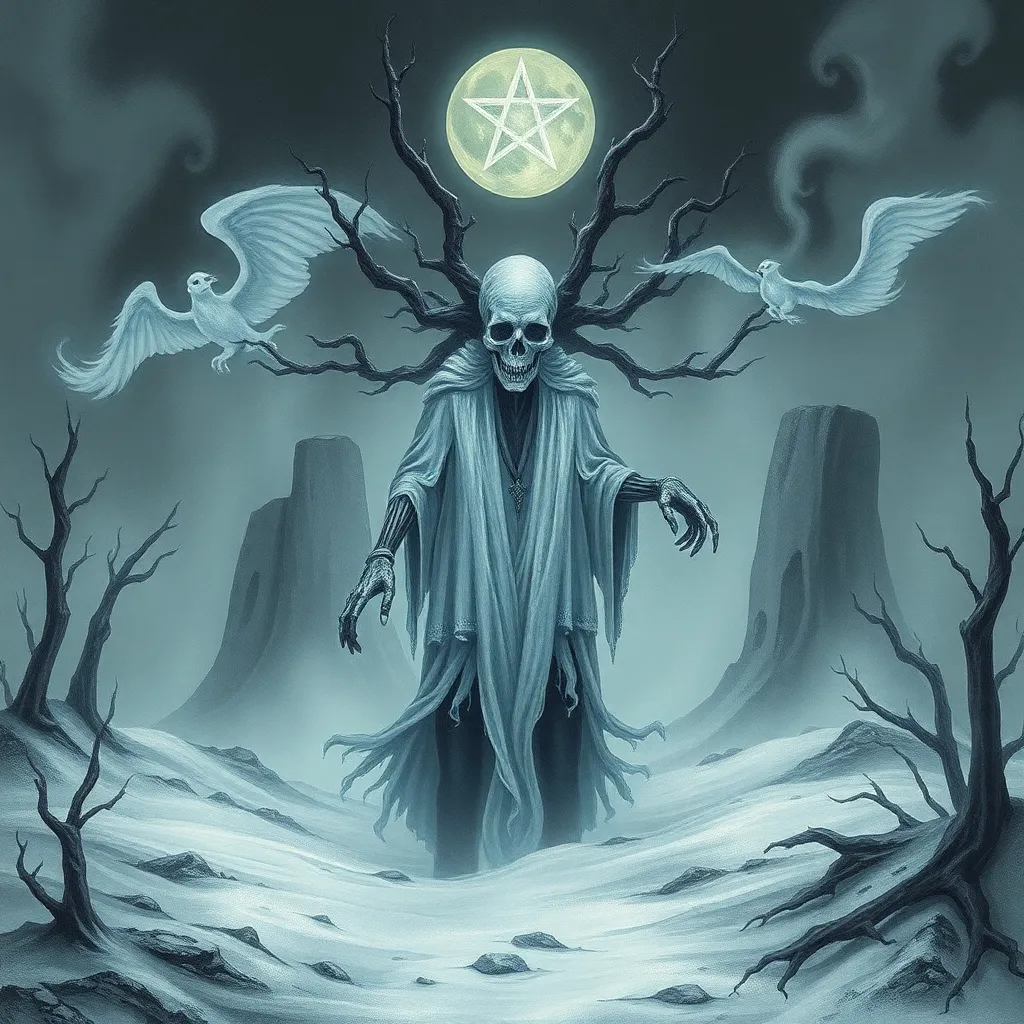The Dryad’s Transformation: Exploring the Ability of Tree Spirits to Change Form
I. Introduction
Dryads are enchanting beings from ancient mythology, often depicted as tree spirits or nymphs closely tied to their respective trees. These ethereal entities symbolize the deep connection between nature and the human spirit, embodying the life force of the forests. Their significance in mythology extends beyond mere folklore; they represent the essence of nature itself, highlighting the importance of preserving the environment.
Transformation is a central theme in many folklore traditions, where beings change form to adapt, survive, or convey deeper meanings. In this article, we will delve into the nature and implications of Dryad transformations, exploring the myths and realities surrounding these fascinating entities.
II. The Mythological Origins of Dryads
The origins of Dryads can be traced back to various ancient cultures, particularly in Greek mythology, where they were revered as protectors of trees. The term “Dryad” comes from the Greek word “drys,” meaning oak, but over time, it encompassed all tree spirits.
Throughout mythology, trees have been symbols of life, wisdom, and endurance. They are often seen as guardians of the earth, and the spirits that inhabit them are believed to possess unique powers. In various traditions, these tree spirits are known by different names:
- Dryads (Greek)
- Naiads (Greek, often linked with water)
- Kodama (Japanese)
- Ents (Tolkien’s Middle-earth)
- Yew Trees (Celtic folklore)
III. The Nature of Transformation
For Dryads, transformation is a profound expression of their connection to nature. It signifies not only their ability to adapt but also their deep bond with the trees they inhabit. This transformation can take various forms:
- Changing into a different type of tree.
- Assuming human-like forms to interact with humans.
- Manifesting as ethereal beings of light or energy.
Dryads are often depicted as being inseparable from their trees; if a tree dies, so does its Dryad. This relationship emphasizes their symbiotic existence, making transformation a vital aspect of their survival.
IV. The Process of Transformation
A Dryad’s transformation can be triggered by several factors:
- Environmental changes, such as deforestation or pollution.
- Emotional states, including fear, anger, or joy.
- Seasonal shifts, symbolizing the cycles of nature.
The role of emotions in a Dryad’s transformation is particularly fascinating. When a tree is threatened, its Dryad may transform into a more formidable form to protect it. Conversely, a Dryad may take on a more delicate form during peaceful times, reflecting the harmony of nature.
Cultural interpretations of transformation vary widely. In some cultures, transformation is seen as a blessing, granting the Dryad the ability to traverse realms. In others, it may be viewed as a curse, representing a loss of identity or connection to the natural world.
V. The Significance of Transformation
The themes of rebirth and renewal are prevalent in Dryad mythology. Just as trees shed their leaves in autumn and bloom anew in spring, Dryads embody the cyclical nature of life. This connection between transformation and ecological balance is crucial:
- Dryads serve as guardians of their trees, ensuring the health of the ecosystem.
- Their transformations reflect the state of the environment, acting as indicators of ecological well-being.
Furthermore, the impact of transformation on human-Dryad interactions is profound. When humans respect and protect nature, Dryads may reveal themselves in their full glory. However, destruction and disregard can lead to anger and retribution, reminding humanity of the consequences of their actions.
VI. Modern Representations of Dryads
In contemporary literature and media, Dryads have undergone significant evolution. They often appear in fantasy novels, films, and video games, sometimes as allies to heroes or as mystical beings to be protected. The portrayal of Dryads has shifted to reflect modern concerns, particularly environmentalism:
- In literature, Dryads symbolize the urgent need for conservation.
- Movies often depict them as protectors of nature, fighting against industrialization.
The archetype of the Dryad has evolved, becoming a powerful symbol of the fight for ecological balance and the preservation of nature.
VII. Cultural Interpretations and Beliefs
Beliefs about Dryads and their transformations vary significantly across regions. In some cultures, Dryads are seen as mere folklore, while in others, they are integral to spiritual practices. Some key aspects include:
- In Slavic folklore, tree spirits are often associated with the souls of the deceased.
- Celtic traditions emphasize the sacredness of trees and the spirits that inhabit them.
- In Native American cultures, tree spirits are seen as protectors of the land and are revered in many ceremonies.
Comparisons with other shape-shifting entities in folklore, such as werewolves or skinwalkers, reveal a fascinating intersection of themes related to transformation, identity, and the natural world.
VIII. Conclusion
In summary, the exploration of Dryads and their transformations unveils a rich tapestry of mythological significance, cultural beliefs, and environmental connections. From their ancient origins to modern representations, Dryads continue to captivate the human imagination, serving as reminders of our bond with nature.
As we reflect on the relevance of Dryads and their transformations today, it becomes clear that these tree spirits embody essential themes of rebirth, renewal, and ecological balance. Their enduring allure lies in their ability to remind us of the beauty and fragility of the natural world, urging us to protect and cherish it.



